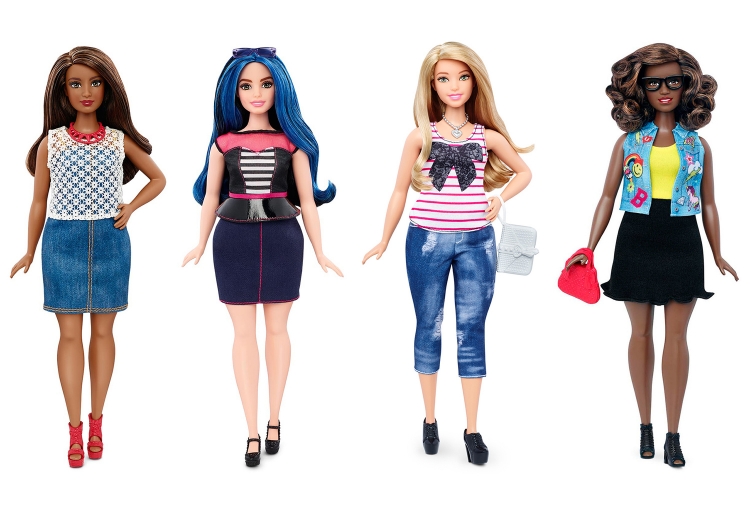The New Barbie: Pop Culture Triumph or Illusion of Progress?

When Mattel released its first Barbie nearly sixty years ago, the famous doll was white, thin, and only available as a blonde or brunette. With the slogan “we girls can do anything”, Barbie's popularity soared.
Over the following decades, however, Barbie was relentlessly scrutinized for her unrealistically thin body image represented as physical perfection to generations of young girls. Last month, Mattel announced the release of a new "Fashionista" line of Barbie dolls — featuring tall, short, and curvy Barbies. The Internet immediately erupted in a frenzy, both criticizing and applauding Barbie’s new look. The new Barbies seem like a much-needed breakthrough; and it is, to some degree. However, despite the evolution of Barbie’s appearance, the reality remains the same. We are still only concerned with her physical appearance.
The success of the Barbie was immediate. By the 1960s, Mattel released Barbie in a variety of new skin tones and was showered with praise for diversifying the brand. However, despite Mattel's efforts to diversify Barbie’s traditional appearance, one aspect remained untouched: her skinny body image. According to an article by The Huffington Post, if Barbie were a real girl, she would be 5’9” with an 18” waist, a 39” bust, and a size 3 shoe. Because of her proportions, she would need to walk on all fours in order to move.
During Barbie's early years in the 1960s, America was experiencing a paradigm shift in body image ideals. The rise of Hollywood actress Audrey Hepburn and fashion model Twiggy shed the glamorization of the voluptuous pinup girls of the 1950s. Curvy was out, skinny was in. In the 1960s the new ‘it’ figure was skin and bones.
Fast-forward into the 21st century and this trend hasn’t budged. However, Barbie’s sales have. Barbie’s sales have been declining rapidly over the past four years. The Washington Post published an article in January describing how, over the past two quarters, Barbie sales have decreased by at least 14 percent each period. That created a lot of speculation about how Mattel would save its golden girl. Now we have the answer.
For the past 57 years, public attention has been mainly focused on Barbie's image. She was the prototype of the "All-American Girl" (the wholesome and slightly idealized girl next door) who came to represent ideals of physical perfection. But in the 21st century with the explosion of social media, Americans have begun to challenge classic images female perfection as beautiful, skinny and docile.
As Charlotte Alter pointed out in her article for Time Magazine, despite Barbie’s 150 careers, “no matter how much she achieves people won’t stop talking about her looks,” which is a reflection of the struggle that many successful women face today. Barbie has been to the moon and she has multiple degrees. She’s a dancer, surgeon, Olympian, and scientist, among other professions. However, despite her accomplishments, the biggest thing to happen to her in sixty years is that she’s available a few pounds heavier.
What does this say about our culture? Is our acceptance of a more feminist society real progress or merely an illusion?
Lena Dunham, the writer and producer of the hit television show "Girls”, has been endlessly scrutinized since the release of her show's first season — not for her writing or the show itself, but for standing in front of the camera topless and unashamed. After the show was first aired, viewers took to Twitter to fat-shame Dunham, telling her to lose weight and stop showing her curves. Little do these trolls know that they are the reason she strips off her clothes. She is trying to change perceptions of the ‘perfect body’ and to promote self-acceptance. The trolls are the reason it's so necessary for her to do this.
The real question is, why does it matter so much? Why are we so obsessed with Barbie’s appearance, or Lena Dunham’s extra few pounds shown unretouched?
In order to truly embrace feminist progress, we need to stop going crazy over body image and begin to look at womens' accomplishments. Although the release of more physically realistic Barbies is important for young girls, the conversation surrounding Barbie needs to shift to what she does rather than how she looks. For a real change, girls need to believe that they truly "can do anything". Otherwise, Barbie will remain representative of the current problems facing women today rather than their triumphs.










